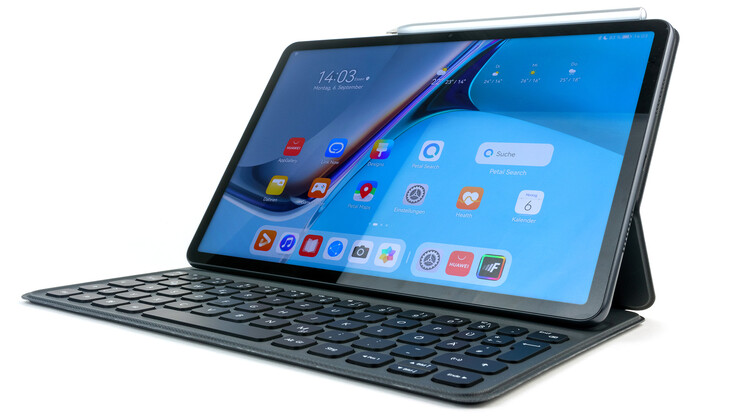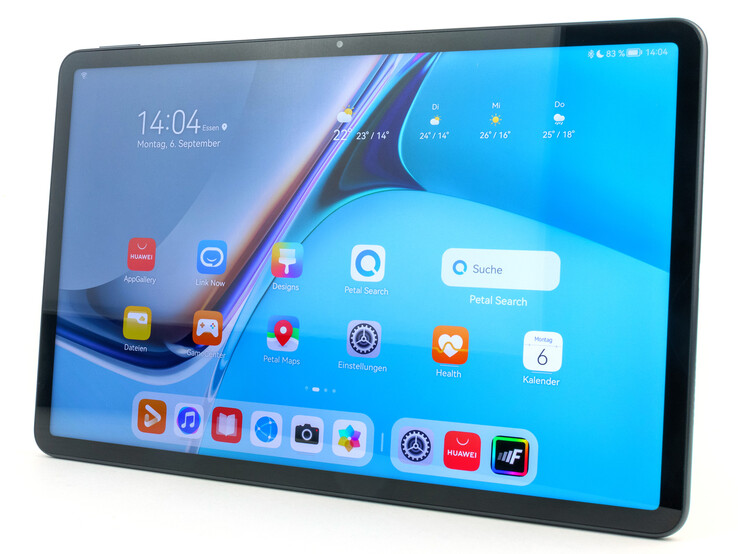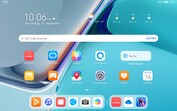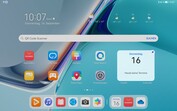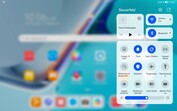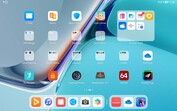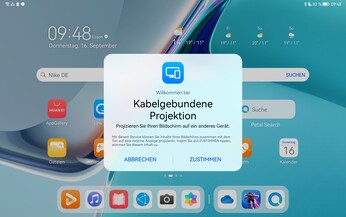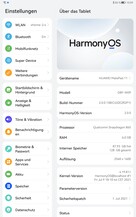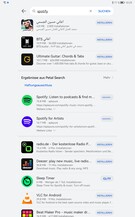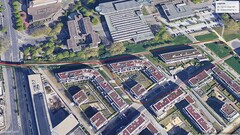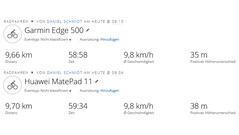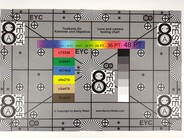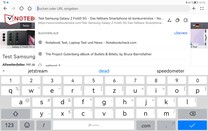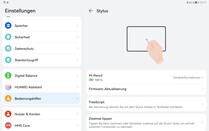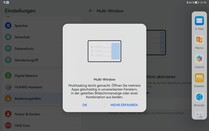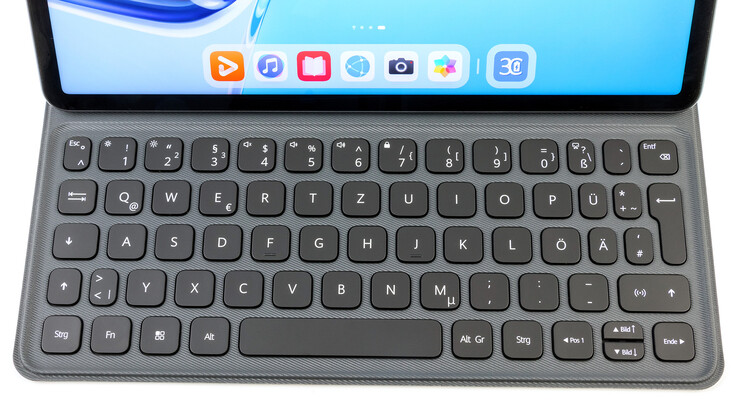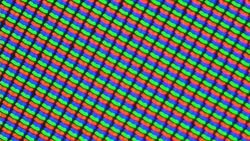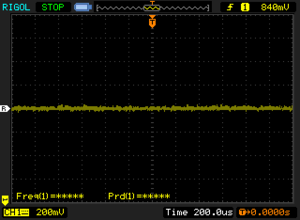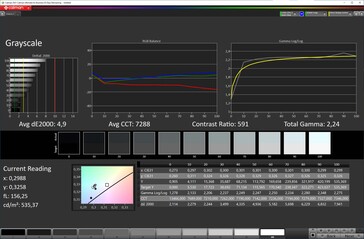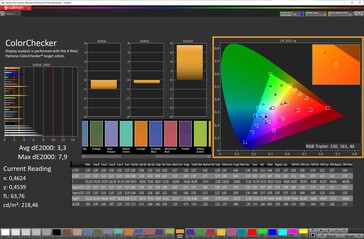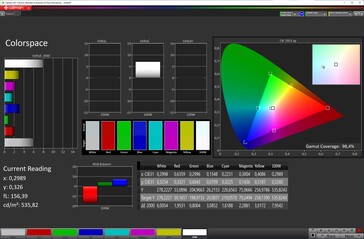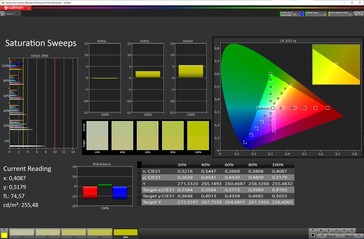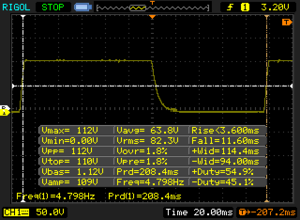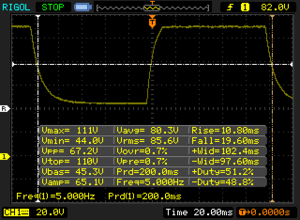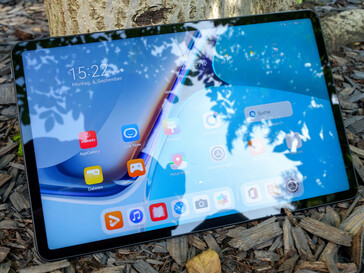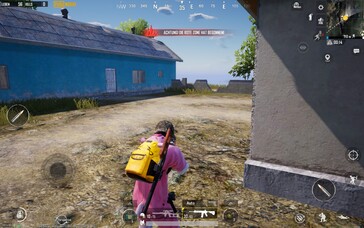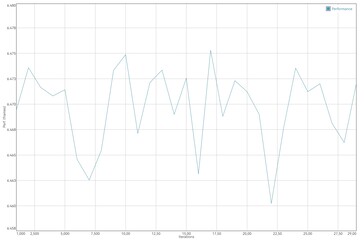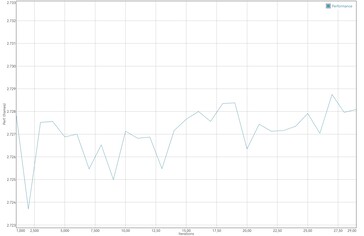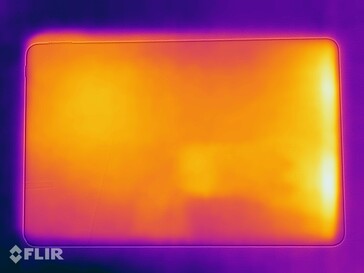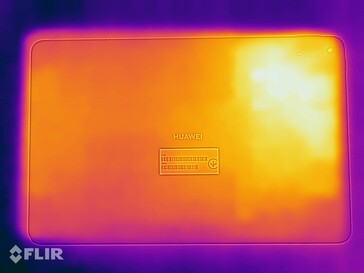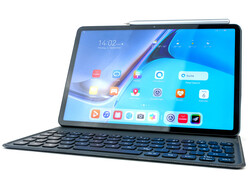Huawei MatePad 11 Review - Great tablet with few weaknesses
The MatePad 11 is a very versatile tablet from Huawei, which offers a very good level of performance and supports pen input. Moreover, the Huawei slate can be paired with a keyboard for office work. It can also be used for media consumption because it can play back DRM-protected content. A quad-microphone array is supposed to enable „crystal clear communication“.
The MatePad 11 is powered by last year’s flagship SoC from Qualcomm. The 10.95-inch display supports the 120-Hz refresh rate. The 64 GB version costs 399 Euros (~$470) while the 128 GB variant sells for 499 Euros (~$590). In addition, the Huawei slate supports Wi-Fi 6 and microSD cards.
Likely Competitors
Rating | Date | Model | Weight | Height | Size | Resolution | Price |
|---|---|---|---|---|---|---|---|
| 88.4 % v7 (old) | 09 / 2021 | Huawei MatePad 11 2021 SD 865, Adreno 650 | 485 g | 7.25 mm | 10.95" | 2560x1600 | |
| 86.2 % v7 (old) | 04 / 2021 | Lenovo Tab P11 Pro SD 730G, Adreno 618 | 485 g | 5.8 mm | 11.50" | 2560x1600 | |
| 83.1 % v7 (old) | 06 / 2020 | Samsung Galaxy Tab S6 Lite Exynos 9611, Mali-G72 MP3 | 467 g | 7 mm | 10.40" | 2000x1200 | |
| 90.1 % v7 (old) | 10 / 2020 | Samsung Galaxy Tab S7 SD 865+ (Plus), Adreno 650 | 500 g | 6.3 mm | 11.00" | 2560x1600 | |
| 88 % v7 (old) | 10 / 2020 | Apple iPad 10.2 2020 A12 Bionic, A12 Bionic GPU | 495 g | 7.5 mm | 10.20" | 2160x1620 | |
| 78.4 % v7 (old) | 12 / 2020 | Medion LifeTab E10802 Helio MT8768, PowerVR GE8320 | 503 g | 8.6 mm | 10.00" | 1920x1200 |
Case - The housing of the MatePad 11 is made of plastic
The midframe and the back of the Huawei MatePad 11 are made of plastic, which is quite susceptible to fingerprints. The plastic is stylised to look like metal though. The screen is protected by some type of glass. Even though the rear camera protrudes 1.8 mm from the device, the MatePad 11 does not wobble when it rests on an even surface.
The slate is well-built. There are no chinks or jagged edges. Applying a lot of pressure to the screen does not cause any ripple effects. The Huawei tablet is neither water- nor dustproof.
The MatePad 11 comes in the following colour schemes: Matte Grey (the only colour scheme available in Germany), Isle Blue and Olive Green.
Connectivity - MatePad 11 features a microSD card reader and a USB 3.2 port
The Huawei MatePad 11 comes with a fast USB 3.2 port, which can achieve transfer speeds of up to 5 Gb/s. OTG functionality is supported. This means that many various peripheral devices can be connected to the tablet.
The display can be operated with the Huawei M-Pencil 2, which comes with the device in Germany. Currently, there is no LTE version.
Card Reader
The MatePad 11 supports all current microSD card formats. What is more, the exFAT file system is supported, meaning that users will be able to store files larger than 4 GB on microSD cards. The Huawei slate achieves good data transfer rates with our reference-grade microSD card Angelbird AV Pro V60.
| SD Card Reader - average JPG Copy Test (av. of 3 runs) | |
| Huawei MatePad 11 2021 (Angelbird AV Pro V60) | |
| Lenovo Tab P11 Pro (Toshiba Exceria Pro M501) | |
Cross Platform Disk Test (CPDT)
Software - Harmony OS 2.0 with DRM certification
The Huawei MatePad 11 runs a proprietary operating system, which is based on the Linux Kernel found in Android 10. All Android applications are compatible with Huawei’s Harmony OS 2.0. Users can download applications from the Huawei AppGallery, including all standard EMUI apps. All in all, Harmony OS and EMUI resemble each other quite a bit. However, Harmony OS offers new features.
Some applications can be opened as ‘snippets’ by pressing on them and then swiping up. In snippet mode, applications do not take up the whole screen. An app in snippet mode can also be pinned as a widget.
Because the tablet does not run Google’s Android it does not support Google Mobile Services. Individual applications can be installed, but if they require Google services, they will not work. This can prove quite annoying in day-to-day use.
Many applications such as WhatsApp, Netflix and Spotify are not available in the AppGallery. When searching for these apps, the AppGallery offers alternatives or advises users to try to download these applications directly from the site of the app maker. When installing APK’s, users will have to wait for a security scan and then approve the installation manually. All in all, the process is not complicated. To update such apps, you will need to select them manually in the AppGallery.
The Huawei tablet can play back DRM-protected content in HD quality. The Netflix app shows that that is, indeed, the case. However, the content does not look particularly good and is not in HDR. It is possible that the Huawei slate cannot stream HD content in full quality.
Communication & Geolocation - Accurate navigation and fast Wi-Fi
The MatePad 11 supports Wi-Fi 6 (dual-band: 2.4 and 5 GHz). With our reference-grade router Netgear Nighthawk AX 12, the tablet was able to achieve fast and stable data transfer rates, which are, actually, on the level of a fast Wi-Fi 5 device.
The Huawei slate does not support 5G, LTE or NFC.
The MatePad 11 comes with a single-band GNSS module. The tablet connects quickly to the satellites but takes a long time to accurately acquire the user’s location. Indoors, users will have to wait quite a bit to get their location.
We were quite surprised by the fact that the MatePad 11 proved to be more accurate than our professional navigator Garmin Edge 500 during our bike ride. Here, the Huawei slate did very well.
Cameras - Huawei tablet with a solid camera and an LED flash
The Huawei MatePad 11 features an 8-MP front-facing camera which can shoot 1080p video at 30 FPS. The sharpness and the colour reproduction are on a good level. However, in certain scenes, the highlights can get blown out. The Huawei tablet is suited for teleconferencing. The microphones do not always pick up voices particularly well though.
The rear camera has a 13-MP sensor. The pictures taken with the main shooter turn out rather dim. All in all, the main camera is good enough for scanning documents. What is more, there is an LED flash, which can be used to light up a scene. The rear camera can record UHD video at 30 FPS. Strangely enough, 720p videos are also limited to 30 FPS.
Image comparison
Choose a scene and navigate within the first image. One click changes the position on touchscreens. One click on the zoomed-in image opens the original in a new window. The first image shows the scaled photograph of the test device.
Wide angleWide angle5X zoomLow-light photography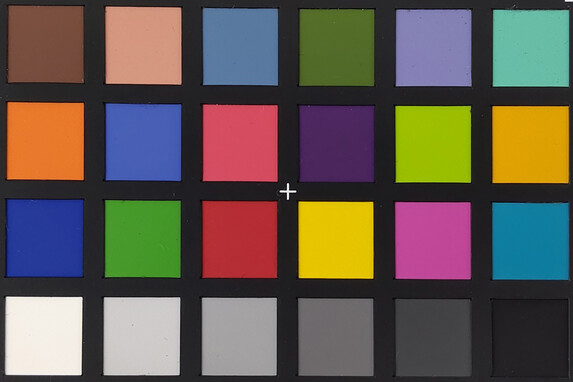
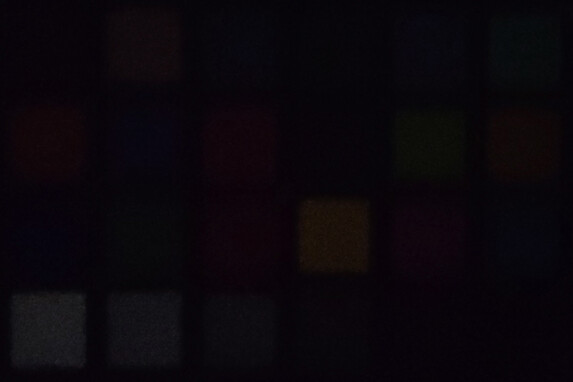
Accessories & Warranty - M-Pencil is included
The Huawei MatePad 11 comes with a modular power adapter (22.5 W), a USB cable (Type-A to Type-C), a card removal tool and the Huawei M-Pencil 2 with replacement tips.
The Smart Magnetic Keyboard can be purchased on Huawei’s website for 99 Euros (~$116). Huawei also sells a Bluetooth mouse (€39/~$45) for the MatePad 11. Huawei does not offer a protective case for the MatePad 11. However, many other manufacturers do.
The tablet comes with a 24-month warranty. Users can easily see the warranty information in the Service application.
Input Devices & Handling - MatePad 11 supports Face Unlock
The Huawei MatePad 11 has a capacitive touchscreen, which can recognise up to 10 inputs at the same time. The screen surface is very smooth. We did not encounter any issues with the touchscreen during our review.
The MatePad 11 comes with the second-generation M-Pencil. It can distinguish 4096 pressure levels. The stylus attaches magnetically to the tablet. We did not encounter any issues when using the pen. Just like the iPad, the MatePad 11 supports handwriting recognition. For instance, users can input text into search boxes by writing with the M-Pencil.
There is also an optional keyboard, which is known as the Smart Magnetic Keyboard. It attaches to the back of the MatePad 11 and has no trouble keeping the tablet steady at two different angles. The QWERTY keys measure 13.9 x 13.9 mm, offer short travel distance, and have a clear actuation point.
The slate supports 2D face recognition. Face Unlock works well and can be configured to bring users straight to the home screen. The tablet allows users to create up to 5 profiles. There is no fingerprint sensor.
Display - 120-Hz IPS panel
The Huawei MatePad 11 has a 10.95-inch IPS screen with a native resolution of 2560x1600 pixels. The average brightness amounts to 515 cd/m². The brightness level remained the same in the APL50 test.
The minimum brightness is on a very good level. This is why users can comfortably read books at night. The MatePad 11 even comes with a special night mode which reduces the amount of blue light that the screen produces. Moreover, the display does not rely on pulse width modulation (PWM) for brightness control. This means that there is no flickering (which is good as flickering can cause headaches and/or eyestrain among susceptible individuals.
The black value is surprisingly high (almost one candela), which is why the contrast ratio is quite low. Nevertheless, the screen content looks quite punchy.
| |||||||||||||||||||||||||
Brightness Distribution: 90 %
Center on Battery: 550 cd/m²
Contrast: 573:1 (Black: 0.96 cd/m²)
ΔE ColorChecker Calman: 3.3 | ∀{0.5-29.43 Ø4.78}
ΔE Greyscale Calman: 4.9 | ∀{0.09-98 Ø5}
98.4% sRGB (Calman 2D)
Gamma: 2.24
CCT: 7288 K
| Huawei MatePad 11 2021 IPS, 2560x1600, 11" | Lenovo Tab P11 Pro OLED, 2560x1600, 11.5" | Samsung Galaxy Tab S6 Lite TFT, 2000x1200, 10.4" | Samsung Galaxy Tab S7 LTPS, 2560x1600, 11" | Apple iPad 10.2 2020 IPS, 2160x1620, 10.2" | Medion LifeTab E10802 IPS, 1920x1200, 10" | |
|---|---|---|---|---|---|---|
| Screen | 14% | 18% | 47% | 24% | -28% | |
| Brightness middle (cd/m²) | 550 | 372 -32% | 503 -9% | 554 1% | 477 -13% | 335 -39% |
| Brightness (cd/m²) | 515 | 375 -27% | 477 -7% | 535 4% | 452 -12% | 319 -38% |
| Brightness Distribution (%) | 90 | 95 6% | 91 1% | 91 1% | 86 -4% | 85 -6% |
| Black Level * (cd/m²) | 0.96 | 0.29 70% | 0.33 66% | 0.5 48% | 0.29 70% | |
| Contrast (:1) | 573 | 1734 203% | 1679 193% | 954 66% | 1155 102% | |
| Colorchecker dE 2000 * | 3.3 | 1.8 45% | 4.4 -33% | 2.1 36% | 2.2 33% | 7.6 -130% |
| Colorchecker dE 2000 max. * | 7.9 | 4.2 47% | 10.4 -32% | 7.1 10% | 5 37% | 14.1 -78% |
| Greyscale dE 2000 * | 4.9 | 2.8 43% | 7.5 -53% | 1.6 67% | 3.3 33% | 10 -104% |
| Gamma | 2.24 98% | 2.29 96% | 2.19 100% | 2.32 95% | 2.23 99% | 2.44 90% |
| CCT | 7288 89% | 6718 97% | 7700 84% | 6623 98% | 7019 93% | 10228 64% |
* ... smaller is better
Screen Flickering / PWM (Pulse-Width Modulation)
| Screen flickering / PWM not detected | |||
In comparison: 53 % of all tested devices do not use PWM to dim the display. If PWM was detected, an average of 8101 (minimum: 5 - maximum: 343500) Hz was measured. | |||
Right out of the box, the colours appear quite cool and oversaturated. The colours look more natural when using the Normal profile, which is capped to the smaller sRGB colour space instead of DCI-P3.
Display Response Times
| ↔ Response Time Black to White | ||
|---|---|---|
| 15.2 ms ... rise ↗ and fall ↘ combined | ↗ 3.6 ms rise | |
| ↘ 11.6 ms fall | ||
| The screen shows good response rates in our tests, but may be too slow for competitive gamers. In comparison, all tested devices range from 0.1 (minimum) to 240 (maximum) ms. » 35 % of all devices are better. This means that the measured response time is better than the average of all tested devices (20.2 ms). | ||
| ↔ Response Time 50% Grey to 80% Grey | ||
| 30.4 ms ... rise ↗ and fall ↘ combined | ↗ 10.8 ms rise | |
| ↘ 19.6 ms fall | ||
| The screen shows slow response rates in our tests and will be unsatisfactory for gamers. In comparison, all tested devices range from 0.165 (minimum) to 636 (maximum) ms. » 40 % of all devices are better. This means that the measured response time is similar to the average of all tested devices (31.6 ms). | ||
The MatePad 11 can be used outside, thanks to its bright screen. Howbeit, the display is hard to read in direct sunlight because of the reflective screen surface.
The IPS panel offers very good viewing angles. The brightness falls slightly at very acute angles though. The screen does not suffer from clouding and the IPS glow effect is very mild.
Performance - Snapdragon 865 in the MatePad 11
The Huawei MatePad 11 features the Snapdragon 865, which is Qualcomm’s last year’s flagship SoC. The Huawei slate comes with 6 GB of RAM. The Adreno 650 is responsible for graphics rendering.
The Snapdragon 865 is still a rather powerful SoC, especially when compared to the Snapdragon 860 in the similarly priced Xiaomi Mi Pad 5 and in the Poco X3 Pro. The Snapdragon 865 is faster than the Snapdragon 860 in all areas, including AI. However, the Galaxy Tab S7 and the iPad 8 beat the Huawei slate.
| AImark - Score v2.x | |
| Huawei MatePad 11 2021 | |
| Xiaomi Poco F3 | |
| Average Qualcomm Snapdragon 865 (107923 - 119152, n=3) | |
| Xiaomi Poco X3 Pro | |
| Lenovo Tab P11 Pro | |
| Medion LifeTab E10802 | |
| VRMark - Amber Room | |
| Xiaomi Poco X3 Pro | |
| Average Qualcomm Snapdragon 865 (4988 - 7649, n=4) | |
| Xiaomi Poco F3 | |
| Average of class Tablet (n=1last 2 years) | |
In the browser benchmarks, the MatePad 11 does reasonably well but is beaten by the iPad and the Galaxy Tab S7. Thanks to a powerful SoC and a 120-Hz screen, the Huawei tablet offers a great web browsing experience.
| Jetstream 2 - 2.0 Total Score | |
| Average of class Tablet (22.3 - 395, n=68, last 2 years) | |
| Apple iPad 10.2 2020 (Safari Mobile 14) | |
| Samsung Galaxy Tab S7 (Chrome86) | |
| Huawei MatePad 11 2021 (Huawei Browser 11.1) | |
| Average Qualcomm Snapdragon 865 (45.2 - 77, n=20) | |
| Lenovo Tab P11 Pro (Chrome 89.0.4389.105) | |
| Samsung Galaxy Tab S6 Lite (Chrome 80.0.3987.99) | |
| JetStream 1.1 - Total Score | |
| Apple iPad 10.2 2020 (Safari Mobile 14) | |
| Samsung Galaxy Tab S7 (Chrome86) | |
| Average Qualcomm Snapdragon 865 (74.2 - 145.1, n=21) | |
| Huawei MatePad 11 2021 (Huawei Browser 11.1) | |
| Lenovo Tab P11 Pro (Chrome 89.0.4389.105) | |
| Samsung Galaxy Tab S6 Lite (Chrome 80.0.3987.99) | |
| Medion LifeTab E10802 (Chrome 87) | |
| WebXPRT 3 - Overall | |
| Average of class Tablet (39 - 480, n=25, last 2 years) | |
| Apple iPad 10.2 2020 (Safari Mobile 14) | |
| Samsung Galaxy Tab S7 (Chrome86) | |
| Average Qualcomm Snapdragon 865 (97 - 127, n=23) | |
| Huawei MatePad 11 2021 (Huawei Browser 11.1) | |
| Lenovo Tab P11 Pro (Chrome 89.0.4389.105) | |
| Samsung Galaxy Tab S6 Lite (Chrome 80.0.3987.99) | |
| Medion LifeTab E10802 (Chrome 87) | |
| Speedometer 2.0 - Result 2.0 | |
| Average of class Tablet (2.59 - 790, n=55, last 2 years) | |
| Apple iPad 10.2 2020 (Safari Mobile 14) | |
| Samsung Galaxy Tab S7 (Chrome86) | |
| Huawei MatePad 11 2021 (Huawei Browser 11.1) | |
| Average Qualcomm Snapdragon 865 (30.6 - 74.5, n=19) | |
| Lenovo Tab P11 Pro (Chrome 89.0.4389.105) | |
| Samsung Galaxy Tab S6 Lite (Chrome 80.0.3987.99) | |
| Octane V2 - Total Score | |
| Average of class Tablet (763 - 138481, n=95, last 2 years) | |
| Apple iPad 10.2 2020 (Safari Mobile 14) | |
| Samsung Galaxy Tab S7 (Chrome86) | |
| Huawei MatePad 11 2021 (Huawei Browser 11.1) | |
| Average Qualcomm Snapdragon 865 (14606 - 31224, n=23) | |
| Lenovo Tab P11 Pro (Chrome 89.0.4389.105) | |
| Samsung Galaxy Tab S6 Lite (Chrome 80.0.3987.99) | |
| Medion LifeTab E10802 (Chrome 87) | |
| Mozilla Kraken 1.1 - Total | |
| Medion LifeTab E10802 (Chrome 87) | |
| Samsung Galaxy Tab S6 Lite (Chrome 80.0.3987.99) | |
| Lenovo Tab P11 Pro (Chrome 89.0.4389.105) | |
| Average of class Tablet (243 - 27101, n=80, last 2 years) | |
| Average Qualcomm Snapdragon 865 (1623 - 2911, n=24) | |
| Huawei MatePad 11 2021 (Huawei Browser 11.1) | |
| Samsung Galaxy Tab S7 (Chrome86) | |
| Apple iPad 10.2 2020 (Safari Mobile 14) | |
* ... smaller is better
The Huawei MatePad 11 comes with very fast UFS 3.1 memory, which is rarely used in devices in this price range.
| Huawei MatePad 11 2021 | Lenovo Tab P11 Pro | Samsung Galaxy Tab S6 Lite | Samsung Galaxy Tab S7 | Medion LifeTab E10802 | Average 128 GB UFS 3.1 Flash | Average of class Tablet | |
|---|---|---|---|---|---|---|---|
| AndroBench 3-5 | -53% | -46% | 3% | -87% | 14% | 41% | |
| Sequential Read 256KB (MB/s) | 1468 | 486.8 -67% | 483.7 -67% | 1512 3% | 274.7 -81% | 1569 ? 7% | 1778 ? 21% |
| Sequential Write 256KB (MB/s) | 708 | 192.3 -73% | 219.3 -69% | 680 -4% | 101.2 -86% | 768 ? 8% | 1329 ? 88% |
| Random Read 4KB (MB/s) | 190.7 | 136.3 -29% | 119.8 -37% | 219 15% | 27.36 -86% | 244 ? 28% | 244 ? 28% |
| Random Write 4KB (MB/s) | 217.5 | 123.3 -43% | 195.8 -10% | 211.5 -3% | 10.32 -95% | 243 ? 12% | 278 ? 28% |
Gaming - More than 60 FPS is out of reach
Thanks to a powerful SoC, the Huawei MatePad 11 can handle all current titles at high settings. Side-loaded games do not support the 120-Hz refresh rate though. The Huawei tablet can run most modern games at a buttery-smooth 60 FPS.
In PUBG, the MatePad 11 was able to maintain a rock-solid 40 FPS on high settings. We were a bit disappointed by Armajet, which ran at 30 FPS, even though it is supposed to support the 120-Hz refresh rate.
The speakers of the Huawei tablet provide a decent soundstage for gaming.
Emissions - Decent sound and stable performance
Temperature
Stress Test with 3DMark Wild Life
(+) The maximum temperature on the upper side is 35.3 °C / 96 F, compared to the average of 33.7 °C / 93 F, ranging from 20.7 to 53.2 °C for the class Tablet.
(+) The bottom heats up to a maximum of 34.7 °C / 94 F, compared to the average of 33.2 °C / 92 F
(+) In idle usage, the average temperature for the upper side is 29.1 °C / 84 F, compared to the device average of 30 °C / 86 F.
Speakers
The quad-speaker system of the MatePad 11 was tuned by Harman Kardon and optimised with Huawei’s sound algorithm Histen 7.0. All in all, the speakers of the Huawei tablet sound very good. There are no other tablets in this price range with such good speakers.
Users can connect wired headphones or speakers to the slate via the USB port. However, for this, you will need an appropriate adapter. The tablet has a Bluetooth 5.1 module which supports the following wireless audio codecs: SBC, AAC and LDAC. Unfortunately, Huawei’s own high-res codec (L2HC), which is used in Huawei’s FreeBuds Studio, is not supported.
Huawei MatePad 11 2021 audio analysis
(+) | speakers can play relatively loud (87.2 dB)
Bass 100 - 315 Hz
(±) | reduced bass - on average 8.2% lower than median
(+) | bass is linear (6.2% delta to prev. frequency)
Mids 400 - 2000 Hz
(±) | higher mids - on average 5.8% higher than median
(+) | mids are linear (2.3% delta to prev. frequency)
Highs 2 - 16 kHz
(+) | balanced highs - only 3.2% away from median
(+) | highs are linear (6.6% delta to prev. frequency)
Overall 100 - 16.000 Hz
(+) | overall sound is linear (11.7% difference to median)
Compared to same class
» 13% of all tested devices in this class were better, 6% similar, 81% worse
» The best had a delta of 7%, average was 20%, worst was 129%
Compared to all devices tested
» 8% of all tested devices were better, 2% similar, 90% worse
» The best had a delta of 4%, average was 24%, worst was 134%
Samsung Galaxy Tab S6 Lite audio analysis
(±) | speaker loudness is average but good (80.2 dB)
Bass 100 - 315 Hz
(±) | reduced bass - on average 13.3% lower than median
(±) | linearity of bass is average (10.6% delta to prev. frequency)
Mids 400 - 2000 Hz
(+) | balanced mids - only 4.7% away from median
(+) | mids are linear (4.8% delta to prev. frequency)
Highs 2 - 16 kHz
(+) | balanced highs - only 4.1% away from median
(+) | highs are linear (3.4% delta to prev. frequency)
Overall 100 - 16.000 Hz
(±) | linearity of overall sound is average (16.2% difference to median)
Compared to same class
» 37% of all tested devices in this class were better, 6% similar, 57% worse
» The best had a delta of 7%, average was 20%, worst was 129%
Compared to all devices tested
» 25% of all tested devices were better, 5% similar, 69% worse
» The best had a delta of 4%, average was 24%, worst was 134%
Energy Management - Long battery runtimes and fast charging
Energy Consumption
The Huawei MatePad 11 is quite an energy-efficient tablet. However, there are some tablets that are even more energy-efficient out there.
The MatePad 11 comes with a 22.5-W power adapter, which takes about 2 hours to fully charge the device. It takes 44 minutes to charge the slate from 0% to 50%. In 80 minutes, the tablet can be charged up to from 0% to 80%.
| Off / Standby | |
| Idle | |
| Load |
|
Key:
min: | |
| Huawei MatePad 11 2021 7250 mAh | Lenovo Tab P11 Pro 8600 mAh | Samsung Galaxy Tab S6 Lite 7040 mAh | Samsung Galaxy Tab S7 8000 mAh | Apple iPad 10.2 2020 8827 mAh | Medion LifeTab E10802 6000 mAh | |
|---|---|---|---|---|---|---|
| Power Consumption | 13% | 12% | 1% | -28% | 26% | |
| Idle Minimum * (Watt) | 1.33 | 1.55 -17% | 1.21 9% | 1.16 13% | 2.12 -59% | 1.25 6% |
| Idle Average * (Watt) | 5.37 | 4.91 9% | 4.24 21% | 4.42 18% | 6.43 -20% | 3.79 29% |
| Idle Maximum * (Watt) | 5.41 | 5.02 7% | 4.34 20% | 4.43 18% | 6.69 -24% | 3.82 29% |
| Load Average * (Watt) | 6.87 | 4.38 36% | 6.99 -2% | 8.86 -29% | 8.17 -19% | 4.99 27% |
| Load Maximum * (Watt) | 10.08 | 6.81 32% | 8.79 13% | 11.6 -15% | 11.84 -17% | 6.33 37% |
* ... smaller is better
Power Draw: Geekbench (150 cd/m²)
Power Draw: GFXBench (150 cd/m²)
Battery Life
We conducted our battery test with the fixed 120-Hz refresh rate and at native resolution. Only under full load, the battery runtimes were on a middling level.
In our Wi-Fi test, in which we limit the screen brightness to 150 cd/m², the Huawei tablet lasted about 14 hours.
| Huawei MatePad 11 2021 7250 mAh | Lenovo Tab P11 Pro 8600 mAh | Samsung Galaxy Tab S6 Lite 7040 mAh | Samsung Galaxy Tab S7 8000 mAh | Apple iPad 10.2 2020 8827 mAh | Medion LifeTab E10802 6000 mAh | |
|---|---|---|---|---|---|---|
| Battery runtime | 2% | 11% | -2% | 5% | -12% | |
| Reader / Idle (h) | 32.9 | 27.4 -17% | 35.3 7% | 32.7 -1% | 37.4 14% | |
| H.264 (h) | 14.4 | 14.2 -1% | 15.8 10% | 14.8 3% | 15.6 8% | |
| WiFi v1.3 (h) | 13.9 | 10.4 -25% | 13.2 -5% | 13.5 -3% | 13 -6% | 12.2 -12% |
| Load (h) | 3.9 | 5.8 49% | 5.2 33% | 3.7 -5% | 4 3% |
Pros
Cons
Verdict - Very capable mid-range slate with known weaknesses
The Huawei MatePad 11 is a very good mid-range tablet, which offers the same level of performance as many more expensive devices. It has what many high-end tablets offer: 120-Hz display, USB 3.2, UFS 3.1, powerful SoC (Snapdragon 865). What is more, the Huawei tablet does not throttle at all under load.
The Huawei MatePad 11 is loaded for bear, and the lack of Google Services is not as limiting as we expected.
Fundamentally, the lack of Google Services is not such a big deal. The AppGallery offers a lot of apps, and many apps that are not there can be side-loaded. But it is up to the users to decide whether or not they are ready for this.
The MatePad 11 is a great multimedia tablet, but it is also a very capable office device. Students will also be happy with it. The MatePad 11 is competing against the much slower Galaxy Tab S6 Lite and the iPad. The iPad with the Apple Pencil, memory upgrade and the optional keyboard can get quite expensive though.
Price and Availability
Unfortunately, at the moment the Huawei MatePad 11 is only available on eBay with scalper pricing. For instance, the brand-new 128 GB version with the global ROM (Harmony OS) currently goes for $650 on eBay. If the supply situation improves the 64 GB version of the MatePad 11 will likely be available for about $450 from European e-tailers that offer global shipping and from various international sellers.
Huawei MatePad 11 2021
- 09/16/2021 v7 (old)
Daniel Schmidt




